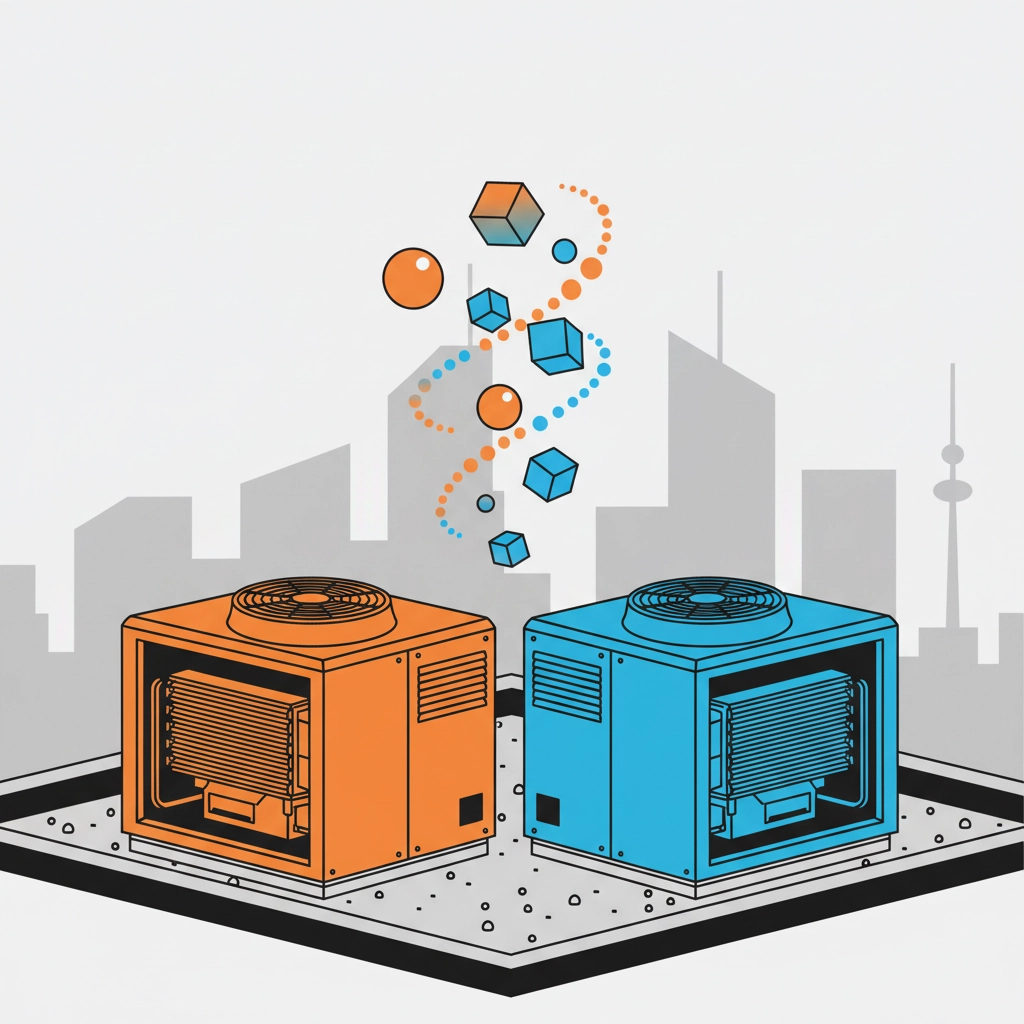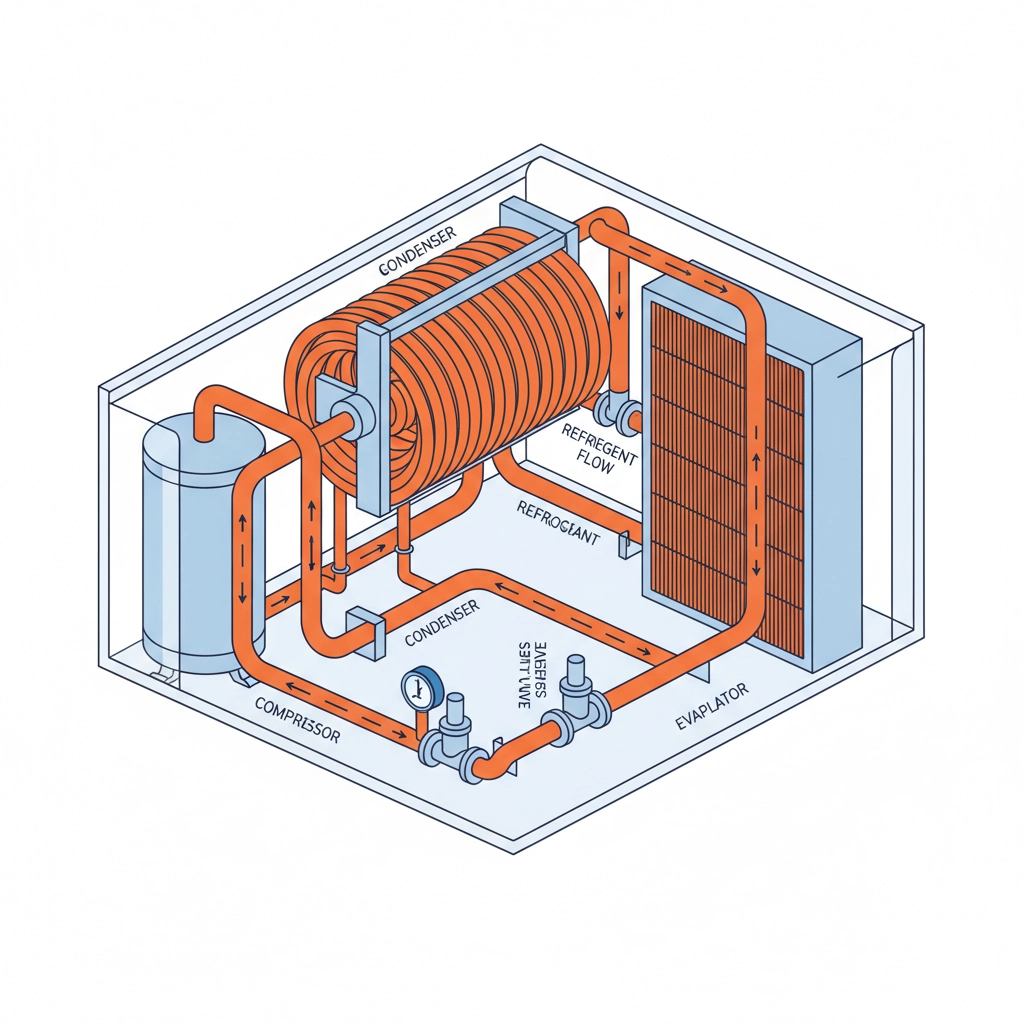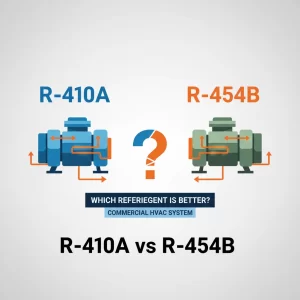R-410A vs R-454B: Which Refrigerant Is Better For Your Commercial HVAC System?
 South Jersey Heating and Cooling Logo” style=”height: 40px; margin-bottom: 20px;”>
South Jersey Heating and Cooling Logo” style=”height: 40px; margin-bottom: 20px;”>
If you're managing a commercial property, you've probably heard whispers about refrigerant changes coming to the HVAC industry. The question isn't whether these changes are happening: it's which refrigerant will serve your business best in the years ahead.
The battle between R-410A and R-454B isn't just about technical specifications. It's about making a smart investment that protects your bottom line while keeping your facility comfortable and compliant with evolving regulations.
Let's break down everything you need to know to make the right choice for your commercial HVAC system.
Understanding the Refrigerant Landscape
For the past two decades, R-410A has been the go-to refrigerant for commercial HVAC systems across South Jersey and beyond. It's reliable, well-understood by technicians, and has powered countless successful installations. But environmental regulations are tightening, and R-454B is emerging as the next-generation alternative.
The shift isn't just about being environmentally conscious: though that's important. It's about future-proofing your investment and avoiding costly surprises down the road.

R-410A: The Industry Veteran
R-410A has earned its reputation as a dependable workhorse in commercial applications. When South Jersey Heating and Cooling installs systems using R-410A, we know exactly what to expect in terms of performance and reliability.
The Strengths of R-410A
Safety First: R-410A carries an A1 safety classification, meaning it's completely non-flammable. For hospitals, schools, restaurants, and other high-occupancy commercial buildings, this safety profile has made R-410A the preferred choice for years.
Proven Track Record: Your maintenance team already knows how to work with R-410A. Parts are readily available, and troubleshooting procedures are well-established. This familiarity translates to lower maintenance costs and faster repairs when issues arise.
System Compatibility: If your existing commercial HVAC equipment was designed for R-410A, it's perfectly optimized for this refrigerant's pressure levels and operating characteristics.
The R-410A Reality Check
Here's where things get complicated. R-410A's Global Warming Potential (GWP) sits between 1,890 and 2,100: that's nearly four times higher than R-454B. As EPA regulations become stricter, R-410A faces an uncertain future.
What does this mean for your business? Potentially higher costs as R-410A becomes scarce, and possible compliance headaches if regulations change faster than expected.

R-454B: The Environmental Game-Changer
R-454B represents the HVAC industry's response to environmental concerns and regulatory pressure. With a GWP of just 465-466, it slashes environmental impact by approximately 75% compared to R-410A.
Why R-454B Makes Business Sense
Regulatory Compliance: R-454B meets current and anticipated EPA refrigerant standards. Choosing R-454B now means you won't face expensive retrofits or system replacements to meet future regulations.
Energy Efficiency: In many commercial applications, R-454B delivers similar or slightly better energy efficiency than R-410A. For large commercial facilities, even small efficiency gains can mean significant savings on utility bills.
Retrofit Compatibility: Here's the good news: R-454B can work in many HVAC systems originally designed for R-410A with only minor adjustments. This compatibility makes transitioning more affordable than you might expect.
The R-454B Consideration
R-454B carries an A2L classification, meaning it's mildly flammable under specific conditions. While the flammability risk is low, it requires updated safety protocols and potentially additional technician training.
For most commercial applications, proper handling procedures easily manage this risk. The key is working with experienced contractors like South Jersey Heating and Cooling who understand A2L refrigerant safety requirements.
Performance Head-to-Head Comparison
| Property | R-410A | R-454B |
|---|---|---|
| Global Warming Potential | 1,890-2,100 | 465-466 |
| Safety Classification | A1 (Non-flammable) | A2L (Mildly flammable) |
| Operating Pressure | 711 psi | 674 psi |
| Energy Efficiency | Standard baseline | Similar or better |
| Regulatory Status | Phase-out likely | Future-compliant |
| Retrofit Compatibility | Original design | Compatible with modifications |
The numbers tell a clear story. While R-410A offers the safety advantage of being non-flammable, R-454B wins on almost every other metric that matters for long-term commercial operations.

Making the Right Choice for Your Business
The decision between R-410A and R-454B depends on your specific situation, facility type, and long-term plans.
Choose R-454B When:
You're Installing New Equipment: For new commercial HVAC installations, R-454B is the smart choice. You'll get decades of regulatory compliance and environmental benefits without compromise.
Environmental Responsibility Matters: If your business has sustainability goals or green building certifications, R-454B's lower environmental impact supports these objectives.
You Want to Future-Proof Your Investment: R-454B systems won't face the regulatory uncertainty that R-410A systems might encounter in the coming years.
Cost Control is Important: While initial costs might be similar, R-454B protects you from potential price spikes as R-410A becomes less available.
Choose R-410A When:
Safety Requirements are Paramount: For hospitals, schools, or other facilities where the non-flammable classification is critical, R-410A might still be the right choice: at least in the short term.
You're Planning Short-Term Use: If you're planning to replace your HVAC system within the next few years anyway, R-410A could make sense for temporary solutions.
Budget Constraints are Severe: In some cases, R-410A systems might offer lower upfront costs, though this advantage is disappearing as R-454B becomes more mainstream.
The Cost Reality
Many business owners worry about the cost implications of switching to R-454B. The truth is, the cost difference between R-410A and R-454B systems has largely disappeared for new installations.
Where you'll see the real financial impact is in the long term. As R-410A faces regulatory pressure, its price will likely increase while availability decreases. R-454B, being the future-compliant option, will likely see stable or decreasing prices as production scales up.
For commercial preventative maintenance contracts, R-454B systems can often be serviced with similar frequency and cost to R-410A systems, especially as technician familiarity increases.
What This Means for Your Next HVAC Decision
The refrigerant landscape is changing, and the businesses that adapt early will avoid the scramble that comes with last-minute compliance requirements.
If you're considering new commercial HVAC equipment, R-454B should be your default choice unless specific safety requirements dictate otherwise. If you're maintaining existing R-410A systems, start planning for the eventual transition: but don't panic about immediate replacement unless your system is already nearing end-of-life.
Getting Professional Guidance
Choosing the right refrigerant isn't just about comparing technical specifications: it's about understanding how your choice fits into your overall facility management strategy. Factors like building occupancy, local codes, maintenance capabilities, and long-term plans all influence the best decision for your specific situation.
At South Jersey Heating and Cooling, we've helped countless commercial property owners navigate this transition. Our team stays current with the latest regulations and can assess your specific needs to recommend the best path forward.
Whether you need a comprehensive evaluation of your current system, want to explore commercial energy audits to optimize efficiency, or are ready to discuss new equipment installation, we're here to help.
Don't let refrigerant uncertainty disrupt your business operations. Call South Jersey Heating and Cooling at 609-488-2253 to discuss your commercial HVAC needs and ensure you're making the right choice for your facility's future.
Your HVAC system is a significant investment: make sure you're investing in the right technology for the years ahead.









